The topic of inclusion is now at the forefront of American discourse. Yet we have overlooked, forgotten, or were completely unaware of one population: the millions of people with disabilities that are not able to use standard public restrooms.
Imagine a child not being able to go on field trips with their classmates, because the museum they are going to has no type of restroom they can be changed in. Or, picture a man having to change his aging father on the floor of a men’s room in an airport while they are on a cross-country trip. These scenarios are examples of how standard public restrooms can prevent a building from being accessible to everyone.
In this article, we assert that dedicated restrooms with adult changing stations should be required by law in public buildings where it is reasonable to assume patrons will need to use a restroom (for instance, airports, malls, museums, stadiums, and schools). We cover the current state of public restrooms, how inclusion helps businesses, the Tesco experiment, and present a tried-and-true changing table that is perfect for the job.
What Are Adult Changing Stations & Why Are They Needed?
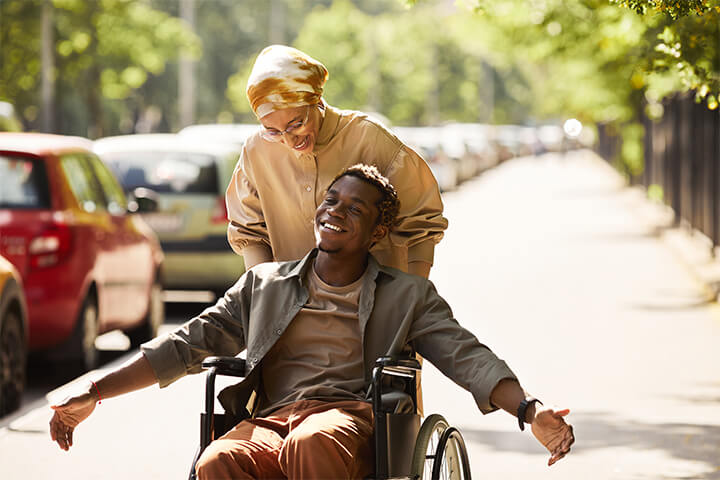
Adult changing stations, also known as special needs changing tables or assisted changing tables, are for individuals who require special bathroom assistance and usually have a caretaker. Despite having “adult” in their name, they accommodate people of all ages.
The United States does not have a federal mandate requiring adult-sized changing stations in public restrooms. The Americans with Disabilities Act (ADA) sets accessibility standards that make public restrooms more accessible, but it does not address the needs of those with disabilities that require their own, dedicated restroom.
However, things are moving in the right direction! There is a growing movement pushing for change at state levels. For instance, as of May 2024, Minnesota became the only state with a law that requires new public buildings to have adult changing stations. Several other states have pending legislation that addresses this need as well. Also, many independent business, school districts, and architects have begun to include adult changing stations in dedicated restrooms in their buildings and projects.
The Limitations of Current Restroom Facilities
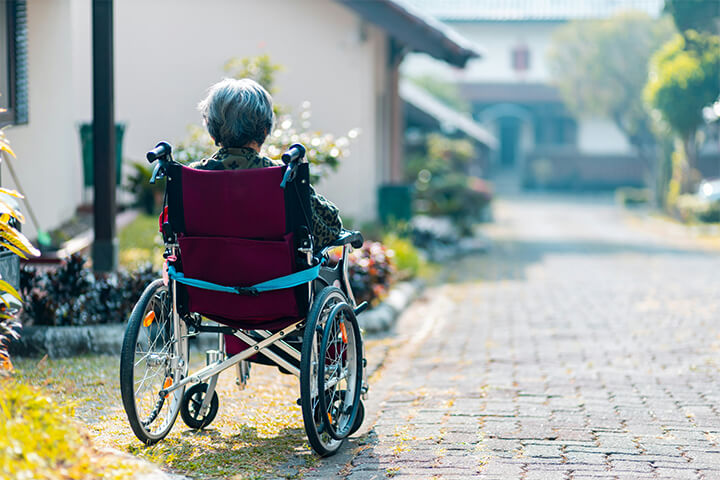
Essentially, if you are a caregiver in the US today, the best you can hope for is using the floor of a handicapped stall to change a child or adult. Anyone who has ever used a public restroom stall in the United States knows there is an inherent lack of privacy within their design. It’s even worse when forced to change a child or adult on a floor as onlookers’ views are entirely unobstructed.
Lying exposed on a cold, wet, and dirty restroom floor is not only bad for one’s mental health, but also potentially their physical health. Changing stations also minimizes contact with contaminated surfaces, lowering the chance of infections and viruses.
With these being the best conditions we have to offer, it’s no surprise that many people simply stop venturing out to public places like grocery stores, malls, restaurants, movie theaters, big box stores, cultural attractions, parks, and sporting events.
Who Needs Adult Changing Stations?

According to the 2019 US Census, 16 million Americans are living with a cognitive disability, over 8 million people need help with daily self-care, and over 20 million people have limited mobility. These children and adults are largely excluded from society due to a lack of accessible restrooms. So, dedicated restrooms with adult changing stations would benefit millions of people.
Children and adults with physical and/or cognitive limitations — both temporary and permanent — greatly benefit from changing stations. Similarly, older adults facing age-related mobility decline or health conditions that require catheters or other medical devices often require a caregiver and access to changing stations. Additionally, spouses, family members, or professional caregivers rely on adult changing stations to provide dignified assistance.
To stress the sheer number of conditions that could render a person unable to use a restroom without assistance, here is an inexhaustive glimpse:
- Injuries like bone fractures, severe sprains, or muscle tears
- Physical disabilities like spinal cord injuries, cerebral palsy, spina bifida, or muscular dystrophy
- Chronic conditions including arthritis, chronic pain, or tremors
- Neurological conditions like MS, Parkinson’s disease, or ASD
- Conditions that cause cognitive decline, such as dementia and Alzheimer’s disease
- Cognitive impairments including brain injuries or strokes
- Post-surgical recovery, especially after surgeries that affect the lower body or core muscles like hip replacement or abdominal surgery
Having reliable public access to adult changing stations opens so many doors for people and their caregivers.
Adult Changing Stations and the Businesses That Benefit

Businesses and public spaces that provide dedicated changing places with adult stations will appeal to a wider customer base, potentially boosting revenue. And that customer base will remain loyal.
The UK supermarket chain Tesco serves as a prime example. This supermarket has been recognized for its commitment to accessibility, including the installation of 100 adult changing stations in stores across the UK. Their changing stations are larger than a normal handicapped stall and include a changing table and privacy screen. This initiative has been praised by disability advocacy groups and has likely contributed to a more inclusive customer base.
Your Simple Solution: The KB3000-AHL Adult Changing Station
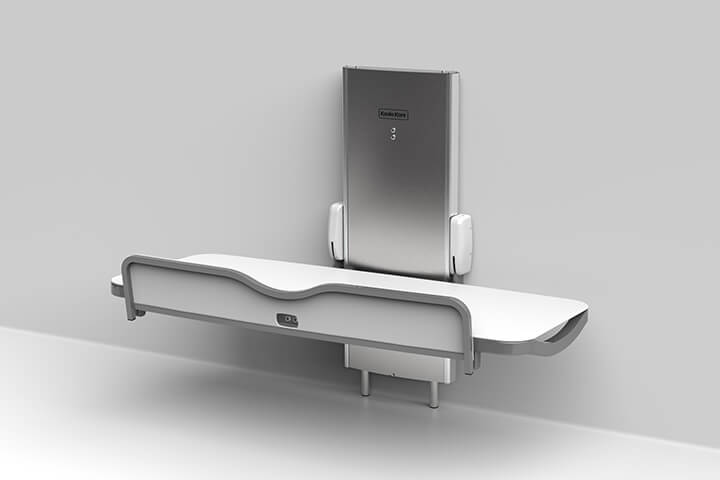
As you see, individuals and families with special needs requirements have very few options. Will your establishment take Tesco’s lead and be at the forefront of making your space accessible to everyone by installing a changing station?
If you choose inclusivity and more customers, we’ve learned of the perfect product for ending this injustice to the disabled. In fact, this is the same changing table that Tesco installed in its stores, so we already know it works well: the Adult Changing Station, distributed by Koala Kare.
Here are some of the key features that showcase the thoughtful design behind this changing table:
Adjustable Height
The height of the changing surface electrically adjusts in an industry best range of 12″ to 41″ from the floor, using controls located on the wall panel or the front guard. Caregivers can easily adjust the platform to a position low enough for easy, safe transfer from a wheelchair, then to a height that is comfortable for them to do the changing.
By raising the platform to a comfortable working height, caregivers can avoid awkward bending, twisting, and lifting, which can lead to back pain, muscle strain, and even injuries like herniated discs.
Safety Features
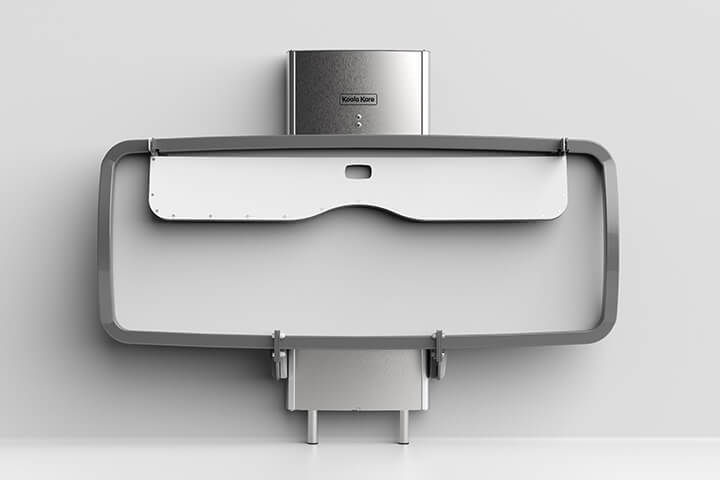
Safety is a priority for Koala Kare, and the KB3000-AHL is equipped with several safety features including:
- An emergency stop button to halt operation immediately.
- A battery backup system that ensures usage even during power outages.
- A weight capacity of 500 lb.
- A curved dip in the changing surface for easier caregiver access.
- A front safety guard that can be operated with one hand.
- No exposed wires or removeable parts.
Durability
The KB3000-AHL is designed for use in high-traffic buildings, being constructed from heavy-duty 2-inch powder-coated steel tubing, making it resistant to wear and tear. It has also been tested to meet rigorous safety standards including:
- ISO 60601-1 and -2 for overall product certification.
- IK10 for resistance to high impact and sharp objects.
- IPX4 for water resistance, ensuring the electrical components are not damaged during cleaning.
- Class 1 electrical system for protection against shock.
With its electric height adjustment, safety features, and durable construction, the KB3000-AHL is an excellent choice for any facility installing a changing table.
A Call for Inclusive Public Restrooms
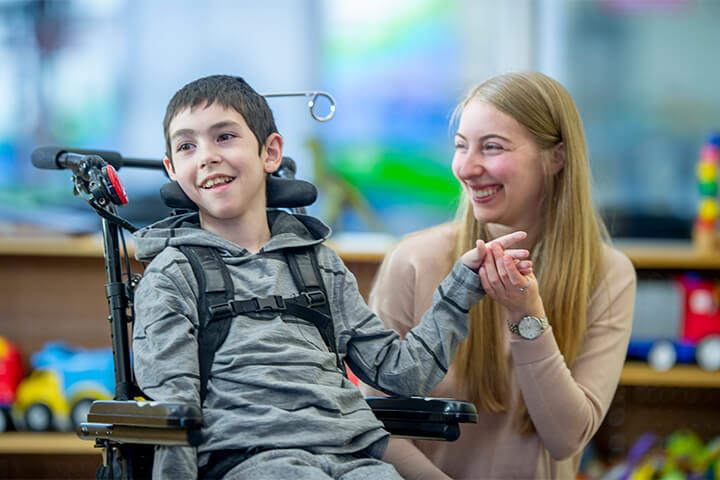
Everyone deserves the freedom to participate in public life. To promote dignity and true inclusivity, any type of building that serves the public for an extended period of time should have a changing spaces restroom with an adult changing station. Let’s advocate for widespread adoption of adult changing stations and break down these barriers.
Partnered With
Koala Kare is the world’s most recognized brand of baby changing stations and commercial childcare products. Koala is a privately held company headquartered in Centennial, CO, and a division of Bobrick Washroom Equipment, Inc.
Helping operators of public establishments equip their operations to accommodate the needs of caregivers and their children is what Koala Kare Products is all about.




I am very impressed that Wasserstrom chose to include this article in its newsletter. I’ve always thought highly of your business, but with this article you have earned an extra star. I had polio when I was three. The residual neuromuscular loss is significant, but I figured out ways to be very active, to drive, to work 40 years, to travel by plane, train, and bus. It was hit or miss whether the public bathrooms would be useable by me. Because of my significant respiratory issues and the higher altitude at which plane cabins are pressurized, I am not able to walk to the plane’s bathroom; I took great advantage of using the airport restrooms in the US, Germany, and Italy. Some are excellent, some are not. Besides issues of design there is also the difficulty if the caregiver is not the same sex as the child or the person needing help. I have seen and used restrooms designated as Family-Male-Female-Disability Logo. Those are great but an addition of an adult sized changing table would be great. Thanks for addressing this topic.
Margaret – Thank you so much for sharing your experience and providing greater context for our readers. Your insights are invaluable and truly highlight the essential need for inclusive and accessible spaces. Changes are happening (albeit slower than we’d prefer), but as more legislation is introduced and more people become aware of this need, we are optimistic about the future.